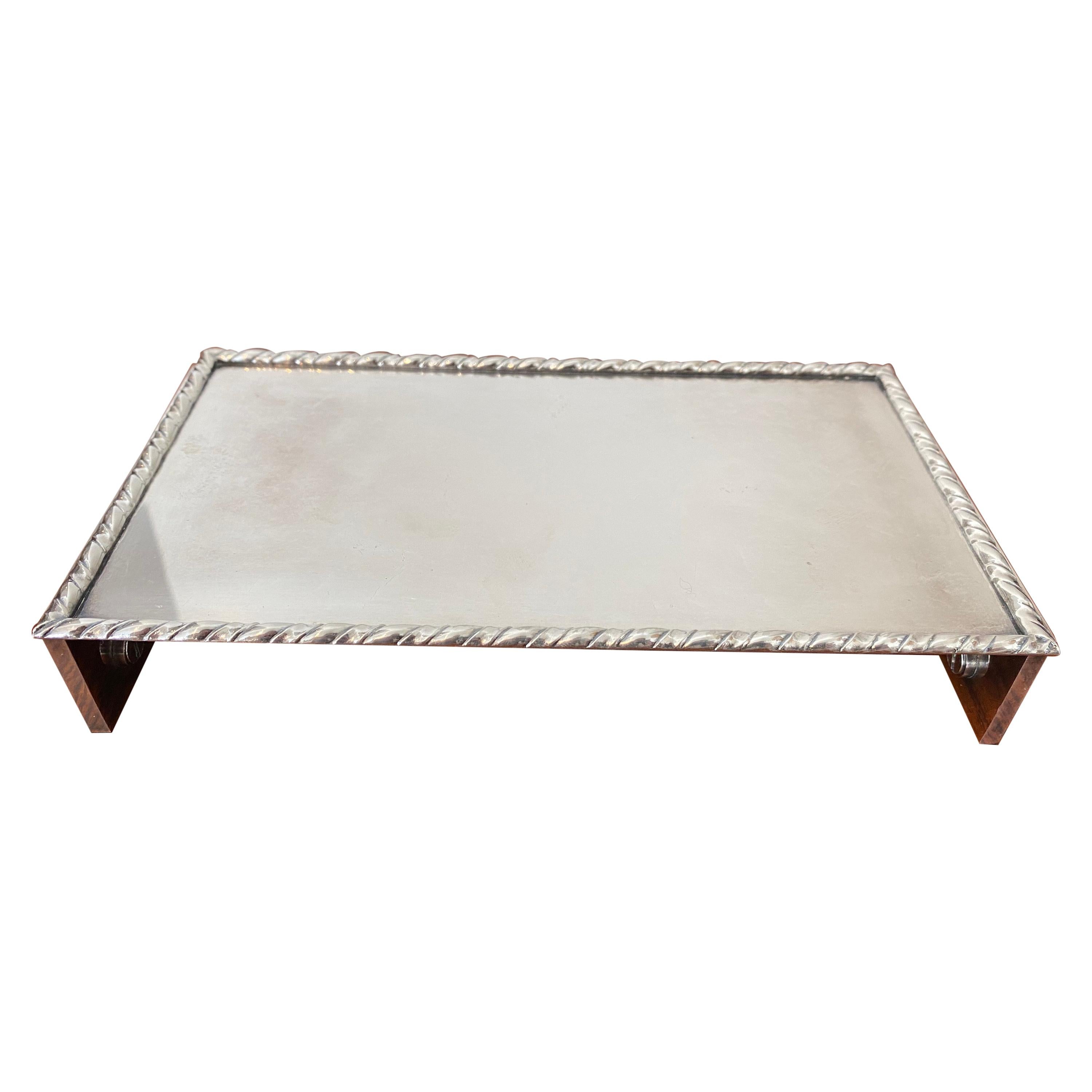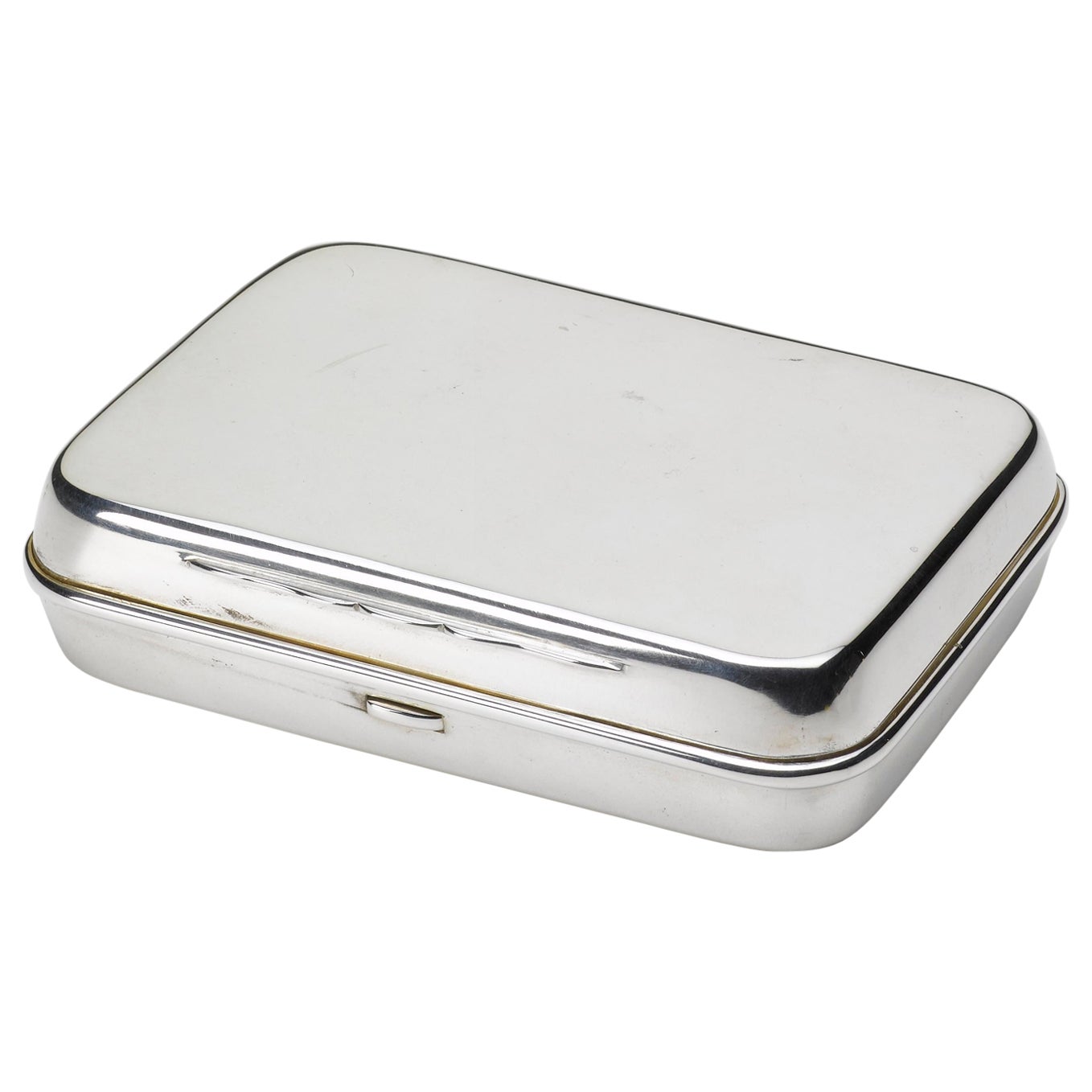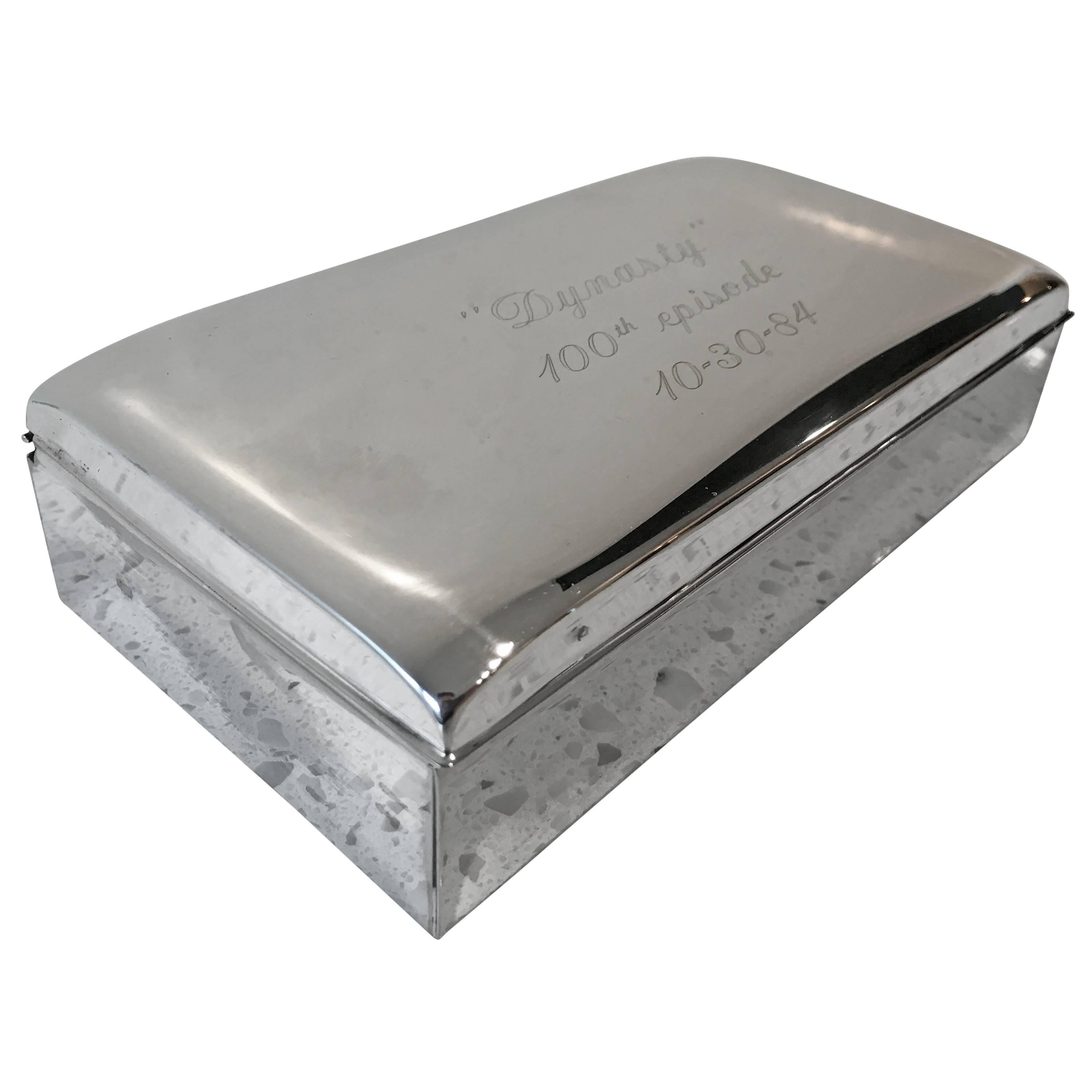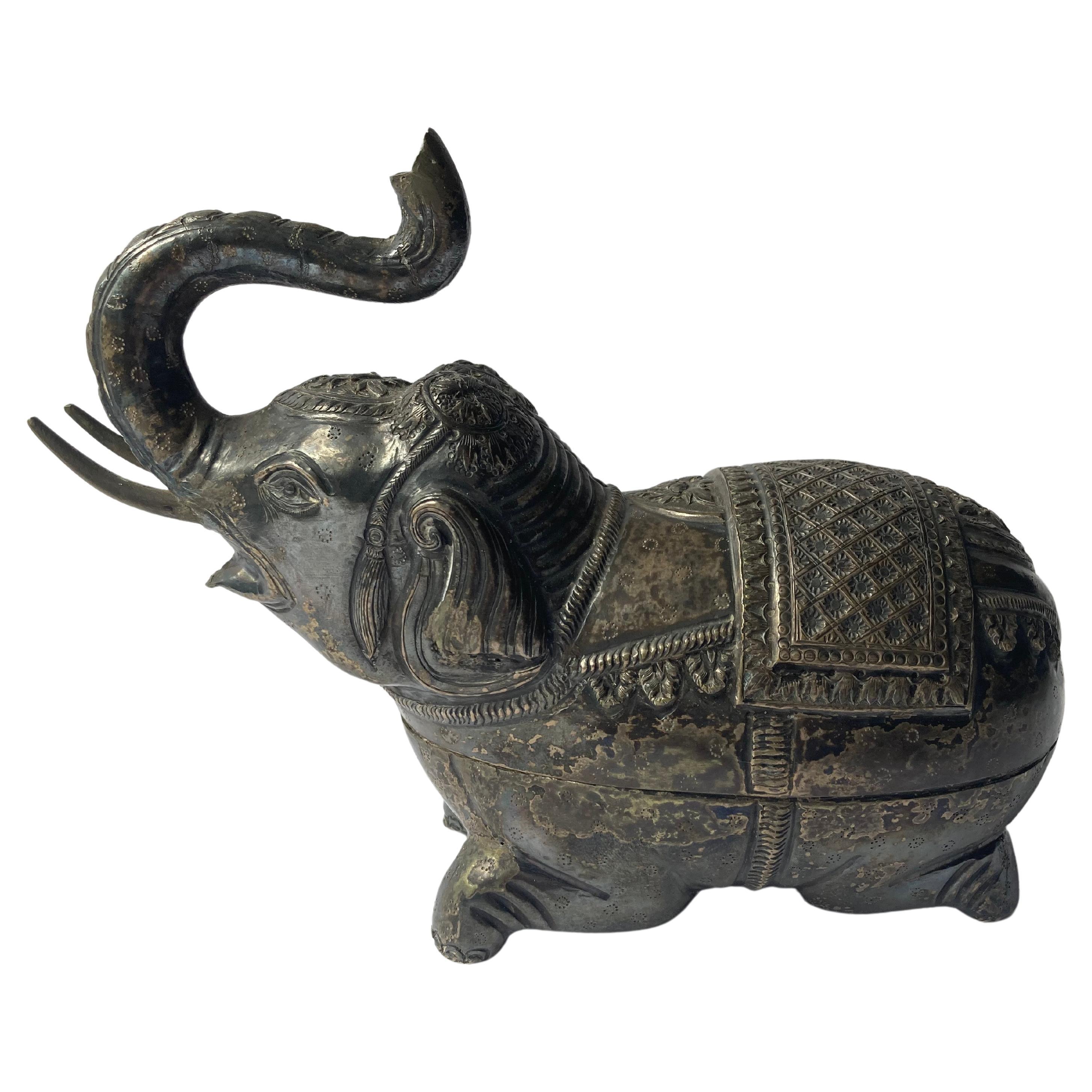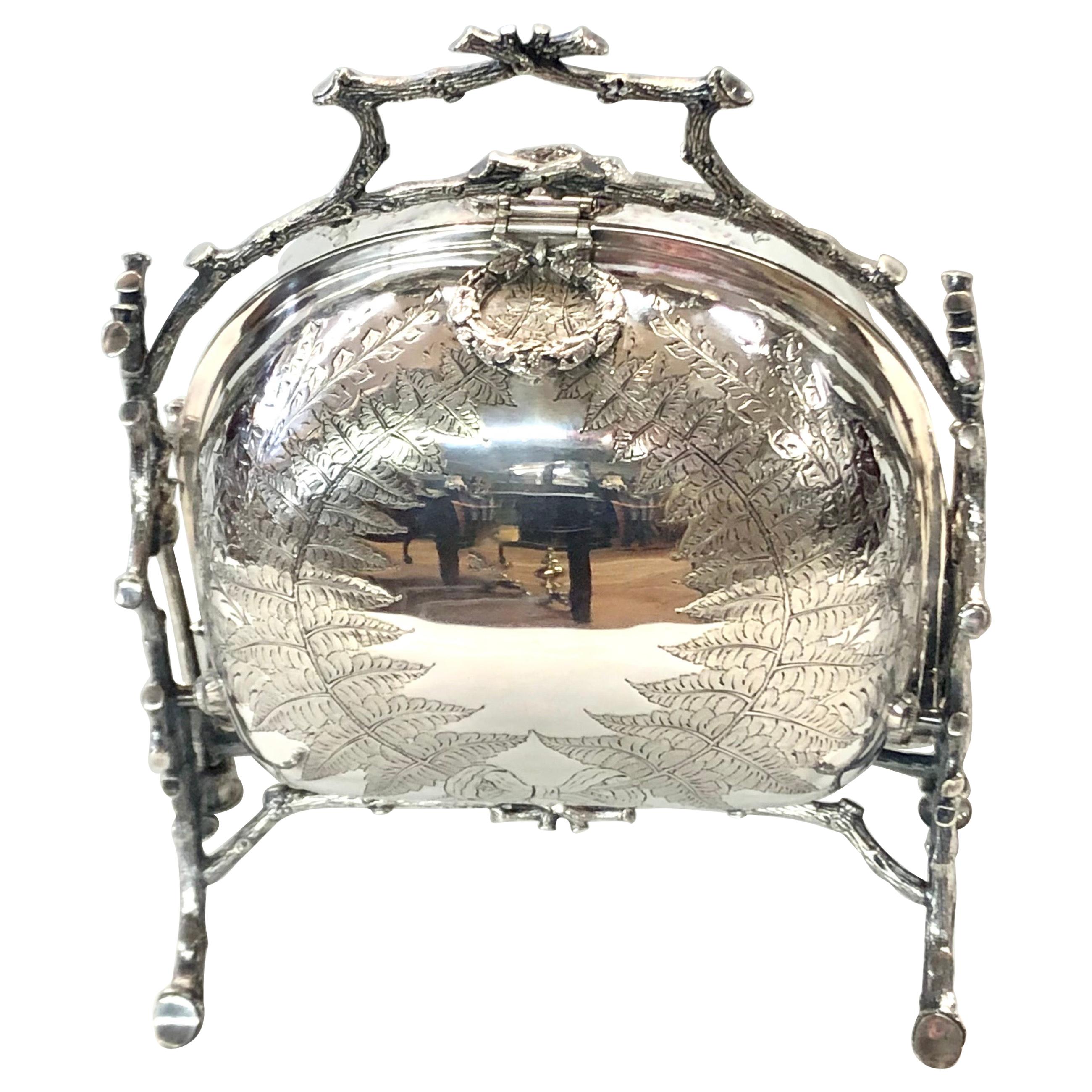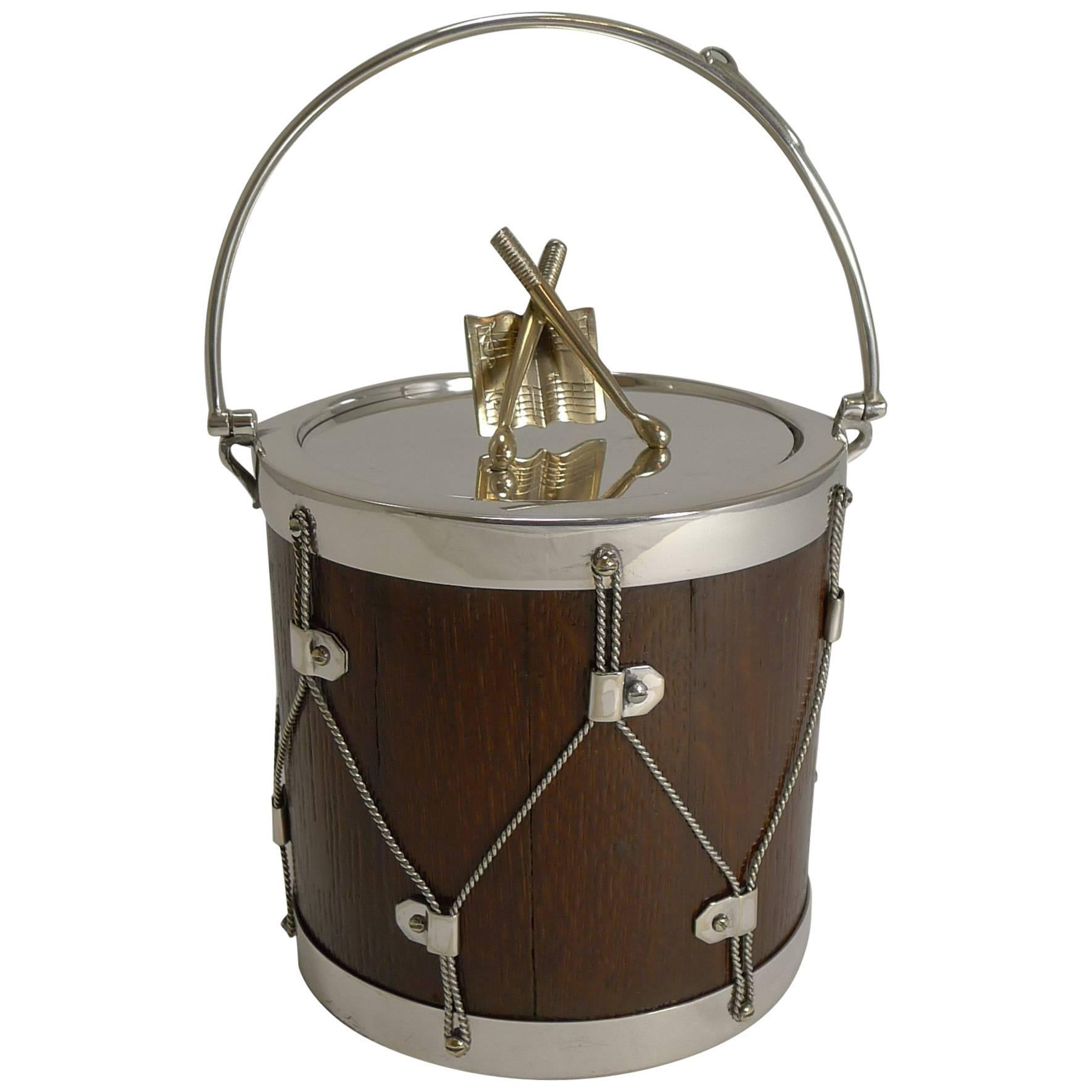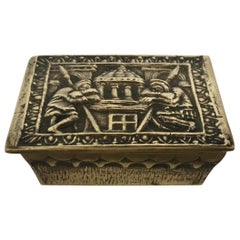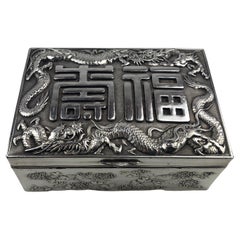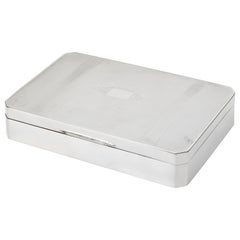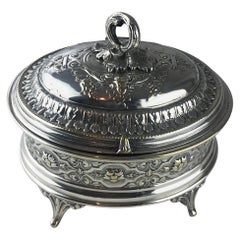
Art Deco Silver Plated Jewelry Box
View Similar Items
Want more images or videos?
Request additional images or videos from the seller
1 of 9
Art Deco Silver Plated Jewelry Box
About the Item
- Dimensions:Height: 4.63 in (11.77 cm)Width: 5.5 in (13.97 cm)Depth: 4.75 in (12.07 cm)
- Style:Art Deco (Of the Period)
- Materials and Techniques:
- Place of Origin:
- Period:
- Date of Manufacture:20th Century
- Condition:Wear consistent with age and use.
- Seller Location:Miami, FL
- Reference Number:1stDibs: LU4082115688241
About the Seller
5.0
Platinum Seller
These expertly vetted sellers are 1stDibs' most experienced sellers and are rated highest by our customers.
Established in 2014
1stDibs seller since 2018
457 sales on 1stDibs
Typical response time: 1 hour
More From This SellerView All
- Max Le Verrier French Art Deco Bronze Jewelry BoxBy Max Le VerrierLocated in Miami, FLThis Max Le Verrier bronze makes a wonderful small jewelry box or use it as a desk accessory for holding paper clips or coins, etc... It is very ...Category
Early 20th Century French Art Deco Jewelry Boxes
MaterialsBronze
$360 Sale Price20% Off - Large French Art Deco Wooden Jewelry Box with Marquetry InlayLocated in Miami, FLA large and very good quality French Art Deco style jewelry box made of walnut with fruitwood inlay. Hand-crafted with an eye to details. Grea...Category
Early 20th Century French Art Deco Jewelry Boxes
MaterialsFruitwood, Walnut
$1,260 Sale Price30% Off - Antique Japanese Silver Cigar, Jewelry or Keepsake BoxLocated in Miami, FLA stunning antique Japanese silver cigar, jewelry or keepsake box intricately designed and handcrafted, circa 1900s. Double skinned body, sides and lid are embossed in high-relief ...Category
Early 20th Century Japanese Art Deco Jewelry Boxes
MaterialsSilver
$2,625 Sale Price25% Off - French Medieval Style Silver Jewelry Box, circa 1880Located in Miami, FLA remarkable intricately designed, handcrafted silver box, circa 1880s. We were told that this box is sterling silver and that the makers mark "M" is that of "M. Mayer". Maurice MAYER was a very prestigious silversmith. Research shows that he was an "Orfèvre de l'Empereur", Napoleon Bonaparte, 1860-1870. The Minerva hallmarks are not visible, may have been rubbed off from use and cleaning. No documentation. This intricately carved box depicts the romantic poem of Le Roman de la Rose (The Romance of the Rose). Comes with the original lock and key. Le Roman de la Rose, begun by Guillaume de Lorris circa 1230 and completed, in a different style, circa 1270-1280, by Jean de Meun, builds on the concept of courtly love found in the poetry of the troubadours. The authors create a complex allegory of the romance between the Lover and the Rose. In the quest to pick the Rose (to achieve the conquest of love), the flower and its attendants represent the Lady and her sentiments while being wooed. In the first part of the poem, written by de Lorris, the Lover recounts his dream, ending with the winning of a kiss from the Lady. In the dream, the Lover discovers a walled garden and gains entrance thanks to a beautiful young woman. He meets Diversion and dancers who represent courtly values such as Beauty and Generosity. A tour of the garden brings him to a beautiful bed of roses by the Fountain of Love...Category
Antique 19th Century French Jewelry Boxes
MaterialsSterling Silver
- French Art Deco Cigarette Box, Walnut Wood and LeatherLocated in Miami, FLA fine French Art Deco cigarette box, France, late 1930s. Very good quality, constructed of walnut wood and leather. Beautiful natural materia...Category
Early 20th Century French Art Deco Snuff Boxes and Tobacco Boxes
MaterialsLeather, Walnut
- Moorish Style Mother-of-Pearl Inlaid Art Deco Cigarette BoxLocated in Miami, FLVintage Moorish style cigarette music box inlaid with mother of pearl and ebony. Handcrafted using very fine Moorish micro mosaic inlaid geometric ...Category
Early 20th Century Moroccan Art Deco Snuff Boxes and Tobacco Boxes
MaterialsWalnut, Mother-of-Pearl, Birch, Rosewood
$680 Sale Price20% Off
You May Also Like
- Deco Style Silver Plate BoxLocated in Stockton, NJA deco style silver plate box. Interested riveted and heavy construction with concave base interior. Marked "Compesi".Category
20th Century Italian Art Deco Jewelry Boxes
MaterialsSilver Plate
- Hallmarked Silver Plated Keepsake Box, Sheffield, Uk, Circa 1900Located in Colorado Springs, COOffered is a stunning Sheffield silver keepsake box dating to 1900, with associated hallmark. This small box includes a clean interior and rounded corners. The box is free of names or initials, but would have been used to house keepsakes such as jewelry or cufflinks. A well maintained, elegant piece, this antique silver box is an excellent addition to any silver collection. Trinket or keepsake boxes have taken on many forms since their first conception in ancient times. However their purpose remains the same; to store jewelry and other items precious to the owner. Originally, these boxes were used specifically for jewelry. These were in common use as early as 5000 BC in Ancient Egypt, when the majority of Egyptians, both male and female, wore jewelry. Boxes were used to keep these gemstone encrusted items safe. In Ancient Rome, jewelry was a status symbol. Rings and brooches were utilized to represent ones status in society. Again, boxes were needed for security and storage purposes. Finding early examples of these are quite rare. Victorian and Edwardian examples of trinket boxes are far more common. This is because owning jewellery was a luxury until the Victorian era- let alone possessing so much a box was needed to store it all. Fine jewelry and other items became available to the masses after the industrial revolution due to the reduction in production costs. This led to a demand for trinket boxes, which were much smaller than jewelry boxes and therefore better suited to the needs of the middle class who did not yet possess an abundance of jewelry. In Victorian households, collectables and other items of interested were also stashed inside these boxes. This is why they are known as trinket or keepsake boxes, rather than just jewelry boxes, although of course jewelry was also stored in them. Trinket boxes were produced in large numbers around this time. Many were lined with colored plush or velvet or rich wood. More elaborate designs had interior divisions and trays for rings and other pieces of jewellery. It was also common to see trinket boxes so small that they could only contain one item, such as a single ring. Ornate exteriors were created to reflect the value of the trinket boxes contents. The Edwardian era saw the introduction of new styles of trinket box. These included small circular or oblong boxes...Category
Antique Early 1900s British Art Deco Decorative Boxes
MaterialsSilver
- Hallmarked Silver Plated Keepsake Box, Sheffield, UK, circa 1900Located in Colorado Springs, COOffered is a stunning silver plated keepsake box dating to 1900, with associated hallmark. This small box includes a wooden interior with two slots and a blank square on top where initials could have been engraved. A well maintained, elegant piece, this antique silver box is an excellent addition to any silver or home decor collection. Trinket or keepsake boxes have taken on many forms since their first conception in ancient times. However their purpose remains the same; to store jewelry and other items precious to the owner. Originally, these boxes were used specifically for jewelry. These were in common use as early as 5000 BC in Ancient Egypt, when the majority of Egyptians, both male and female, wore jewelry. Boxes were used to keep these gemstone encrusted items safe. In Ancient Rome, jewelry was a status symbol. Rings and brooches were utilized to represent ones status in society. Again, boxes were needed for security and storage purposes. Finding early examples of these are quite rare. Victorian and Edwardian examples of trinket boxes are far more common. This is because owning jewellery was a luxury until the Victorian era- let alone possessing so much a box was needed to store it all. Fine jewelry and other items became available to the masses after the industrial revolution due to the reduction in production costs. This led to a demand for trinket boxes, which were much smaller than jewelry boxes and therefore better suited to the needs of the middle class who did not yet possess an abundance of jewelry. In Victorian households, collectables and other items of interested were also stashed inside these boxes. This is why they are known as trinket or keepsake boxes, rather than just jewelry boxes, although of course jewelry was also stored in them. Trinket boxes were produced in large numbers around this time. Many were lined with colored plush or velvet or rich wood. More elaborate designs had interior divisions and trays for rings and other pieces of jewellery. It was also common to see trinket boxes so small that they could only contain one item, such as a single ring. Ornate exteriors were created to reflect the value of the trinket boxes contents. The Edwardian era saw the introduction of new styles of trinket box. These included small circular or oblong boxes...Category
Antique Early 1900s English Art Deco Decorative Boxes
MaterialsSilver
$600 Sale Price20% Off - "Dynasty" 100th Episode Silver Plated Table BoxBy Towle SilversmithsLocated in West Palm Beach, FL"Dynasty" 100th Episode Silver Plated Table Box Step into the world of luxury with the Dynasty 100th Episode Silver Plated Table Box. This unique keepsake, presented to the Dynasty ...Category
Vintage 1980s American Mid-Century Modern Decorative Boxes
MaterialsSilver Plate
$696 Sale Price53% Off - Early 20th Century Faceted Glass & Silver Plated Biscuit Box, c.1920By John Grinsell & SonsLocated in Bath, GBA heavy piece of glass was used to create this quality example, faceted all the way around and series of simple linear cuts around the circumference; the underside having a star cut....Category
Vintage 1910s English Art Deco Decorative Boxes
MaterialsSilver Plate
- Anglo-Indian Silver Plate Metal / Trinket, Box Elephant, SculptureLocated in Los Angeles, CABeautiful silvered metal box of an elephant in a very traditional Anglo -Indian craft, art. Has an amazing age patina in contrast with the inside, as shown.Category
Early 20th Century Indian Anglo-Indian Decorative Boxes
MaterialsSilver Plate
